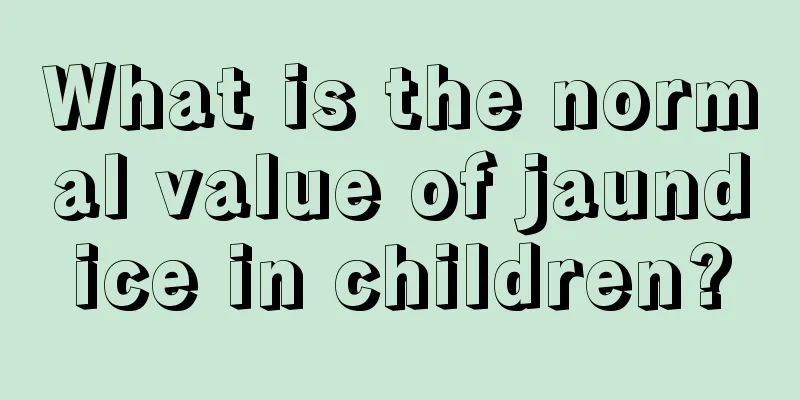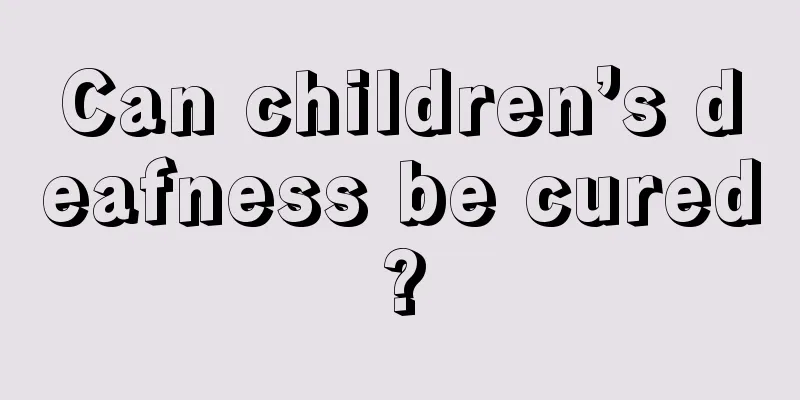What are the symptoms of enlarged tonsils in children?

|
Young children's immunity is relatively imperfect and they are easily harmed by bacteria, which can cause their tonsils to become enlarged. It can easily cause bacterial infection, especially hemolytic streptococcus, pneumococcus, or staphylococcus, which often manifests itself in a variety of symptoms, such as drooling, coughing, snoring during sleep, respiratory tract infection, etc. 1. Ear symptoms Due to inflammation, some secretions accumulate in the nasopharynx, and coupled with hypertrophy of the tonsils, the pharyngeal opening becomes blocked, causing purulent or non-suppurative otitis media. In severe cases, it can also lead to hearing loss, tinnitus, and stuffy ears. 2. Nasal symptoms The nose often suffers from complications such as rhinitis and sinusitis. Babies with this disease generally have the following symptoms: nasal congestion, runny nose, mouth breathing, drooling, occlusive nasal sounds when speaking, snoring during sleep, etc. 3. Symptoms of respiratory infection Due to inflammation, secretions will irritate the respiratory mucosa, so it is easy to cause some respiratory diseases, such as pharyngitis, tracheitis and bronchitis. Therefore, the child will feel very uncomfortable in the throat, and the voice of his voice will change. At the same time, he will be accompanied by coughing, spitting, wheezing, etc., and some will also have a low fever. 4. “Adenoid facies” It means that the child breathes through the mouth for a long time, which affects the normal development of the facial bones and causes "deformities" to appear on the face. The child's maxilla becomes long and narrow, while the hard palate becomes highly arched and narrow. At the same time, due to the protruding teeth and irregular tooth arrangement, the child's lower jaw will sag, the lips will become thicker, the upper lip will be upturned, the lower lip will hang, the outer canthus will be pulled down, and the nasolabial groove will become shallow and flat. In addition, long-term illness causes the baby to be listless, making the face look dull and stupid. The combination of various factors forms the "adenoid facies". |
<<: Why are there obvious blood vessels in my baby’s eyelids?
>>: What is the reason for the child to have a red birthmark?
Recommend
What should I do if my baby got a bump on the back of his head?
The birth of the baby brought a lot of happiness ...
Symptoms of heat stroke in young children
Heatstroke is a general term for the symptoms of ...
Is it good or bad for children to use pillows?
A pillow is a kind of bedding that people often u...
What should I do if my child has a foreign object stuck in his throat?
As babies grow older, they are full of curiosity ...
What should I do if my 2-year-old baby is nearsighted?
Due to factors such as improper diet or long-term...
What soup should babies drink when they have a cough?
Coughing causes excessive sputum and finally feve...
What should I do if my baby always bites his lower lip?
Some babies have abnormal phenomena, especially s...
How should the baby’s diet be arranged when he has a fever?
For new mothers, once their baby has a fever, the...
Can seven-month-old babies eat sweet potatoes?
The taste of sweet potatoes is very similar, espe...
What to do if your baby has poor digestion and vomits
It is very easy for babies to have poor digestion...
How to make blueberry puree for baby food
For some babies, you can give them some fruit pur...
What are the symptoms of lobar pneumonia in children?
Pneumonia is a relatively complicated disease cli...
Key points for caring for babies who have restless sleep
Now people's living standards have improved, ...
Tips for treating bloating in children
Children at this stage have relatively poor immun...
What to do if your baby has a runny nose due to a cold
It is normal for parents to have a baby catch a c...









